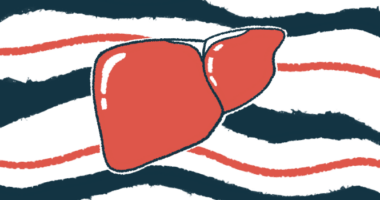New study may explain milder liver scarring seen in Alagille syndrome
Alterations to immune system found in patient samples, mouse model

Alterations to the immune system may underlie the mild liver scarring, or fibrosis, that characterizes Alagille syndrome despite severe liver disease, according to a new study that used data from patient samples and a mouse model of the condition.
Immune cells in Alagille syndrome seem to take on a less inflammatory profile than what would normally be expected in the context of a liver disease, according to the researchers. Further, transplanting immune cells from the Alagille mouse model into another mouse model of liver injury resulted in less liver fibrosis.
The researchers believe these findings could in part explain why liver scarring in Alagille does not become as severe as it does in other liver conditions, and in turn, may inform the development of new liver fibrosis treatments.
“We believe these findings could have broader implications for treating liver fibrosis, potentially through targeted manipulation of the immune system,” Emma Andersson, PhD, the study’s senior author and a principal investigator at Karolinska Institutet in Sweden, and Jan Mašek, PhD, the study’s first author who started the work as a postdoctoral researcher in Andersson’s lab, said in a Karolinska Institutet news story. Mašek is now a researcher at Charles University in Prague.
The study, “Jag1 insufficiency alters liver fibrosis via T cell and hepatocyte differentiation defects,” was published in the journal EMBO Molecular Medicine.
Investigating the Jag1 gene in Alagille liver scarring
Fibrosis is an important part of wound healing, serving to repair damaged or injured tissue. But in excess, too much scar tissue can cause organs to become overly stiff and dysfunctional.
In many chronic liver diseases, the liver tries to repeatedly heal itself from disease-related injury, which over time causes scar tissue to accumulate.
Alagille syndrome is a genetic disease in which the flow of the digestive fluid bile is stalled — a condition known as cholestasis — due to congenital abnormalities in the ducts responsible for carrying it out of the liver. In contrast to other cholestatic liver diseases, such as biliary atresia, however, Alagille is marked by relatively mild liver scarring, even though liver disease may be severe.
Thus, having a better understanding of the mechanisms behind this milder fibrosis pattern could potentially help scientists develop new treatment approaches for liver scarring.
Alagille is usually caused by mutations in the JAG1 gene that affect the function of Notch, a signaling pathway involved in early organ development. Evidence suggests that these mutations lead to significant immune dysregulation. However, “how this might interact with liver disease in [Alagille syndrome] to affect fibrosis is not known,” the researchers wrote.
To learn more, the team first examined liver-immune system interactions in a mouse model of Alagille engineered to have Jag1 mutations.
They found that hepatocytes, the liver’s main type of cell, were immature in the mouse model relative to healthy mice. These findings were also confirmed in liver samples from Alagille patients.
In addition, the mice’s immature hepatocytes seemed to have a limited ability to take on the activated state that would be expected when there’s a liver injury that needs repair.
“The mild pro-inflammatory activation of immature hepatocytes could compromise the ability of [the Alagille] liver to attract and/or activate [immune] T cells upon cholestatic injury,” the researchers wrote. T-cells’ pro-inflammatory, activated state is known to facilitate wound healing.
Data show a ‘multilayered role’ for Jag1 in fibrosis process
When looking at T-cells within the liver of the Alagille mouse model, the team found unexpectedly low numbers of T-cells despite ongoing cholestasis that should attract these cells. This suggested “a defect in T cell response to cholestasis which could impact the fibrotic process,” the researchers wrote.
Analyses of the glands and organs responsible for T-cell maturation and activation showed an unusually high proportion of regulatory T-cells, known as Tregs, which suppress inflammatory and immune responses by regulating the activity of other immune cell populations.
“Tregs are anti-fibrotic in the context of cholestatic liver injury,” the team wrote.
To better understand whether immune alterations in Alagille directly influence liver fibrosis, the scientists collected lymphocytes, a class of immune cells that includes T-cells, from the Alagille mice and transplanted them into mice with surgically induced cholestasis. The recipient mice were also genetically engineered to lack their own lymphocytes.
The results showed that liver fibrosis in the recipient animals was significantly lessened when they were given immune cells from the Alagille model relative to animals given immune cells from healthy mice without Jag1 mutations.
These results provide new insights into how Jag1 controls fibrosis [in Alagille syndrome].
Collectively, the scientists believe the findings suggest that Alagille-causing mutations lead to alterations in liver and immune cells that make them less likely to take on the activated state that normally drives fibrosis, which is why liver scarring looks substantially different in Alagille than it does in some other liver conditions.
“Our data demonstrate a multilayered role of Jag1 in the fibrotic process, affecting both hepatocyte maturation and injury response, as well as T cell [maturation] and pro-fibrotic activity, providing a mechanistic framework for therapeutic modulation of Notch signaling in liver disease,” the researchers wrote.
“We suggest that the course of liver disease in [Alagille syndrome] may be determined by the interaction between hepatic [liver] and immune system developmental defects,” the team concluded, noting that “these results provide new insights into how Jag1 controls fibrosis.”








